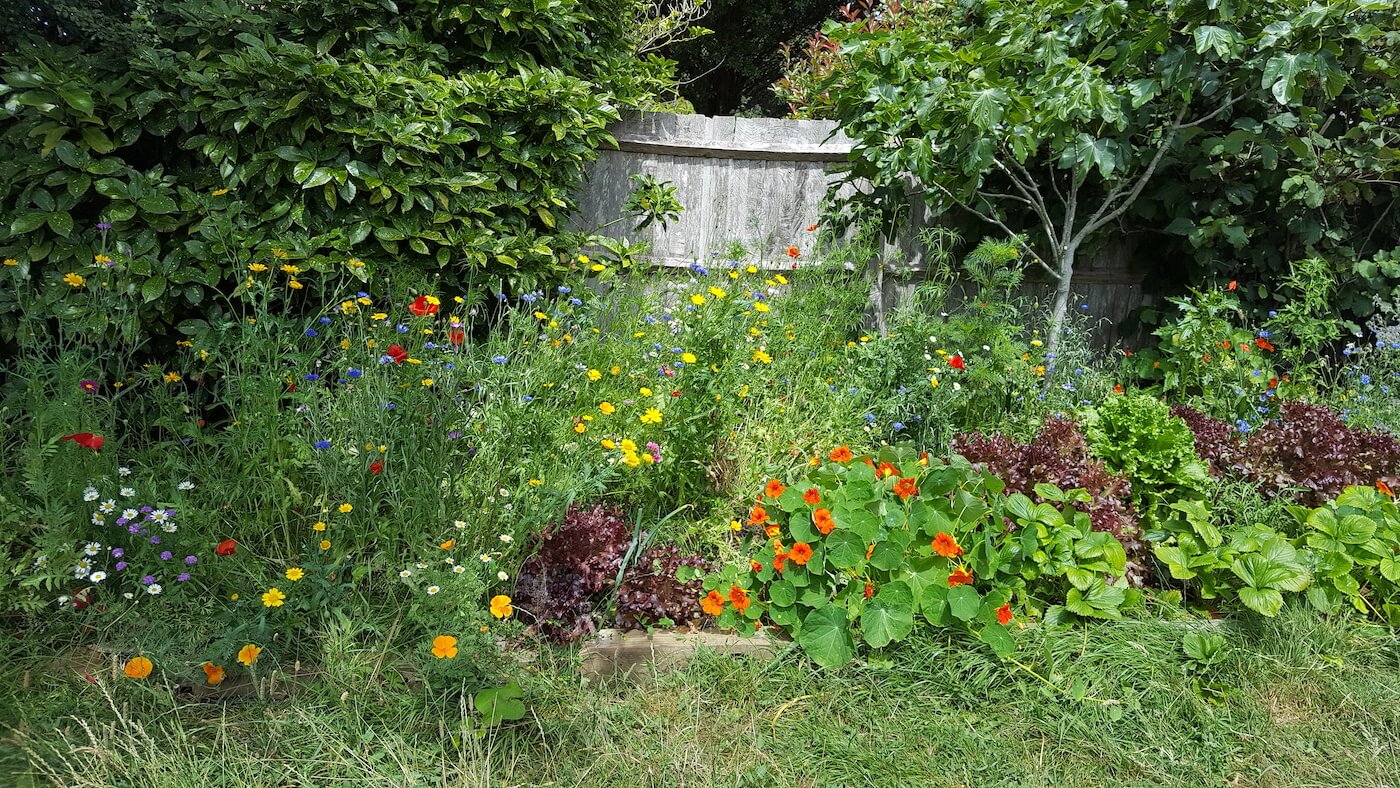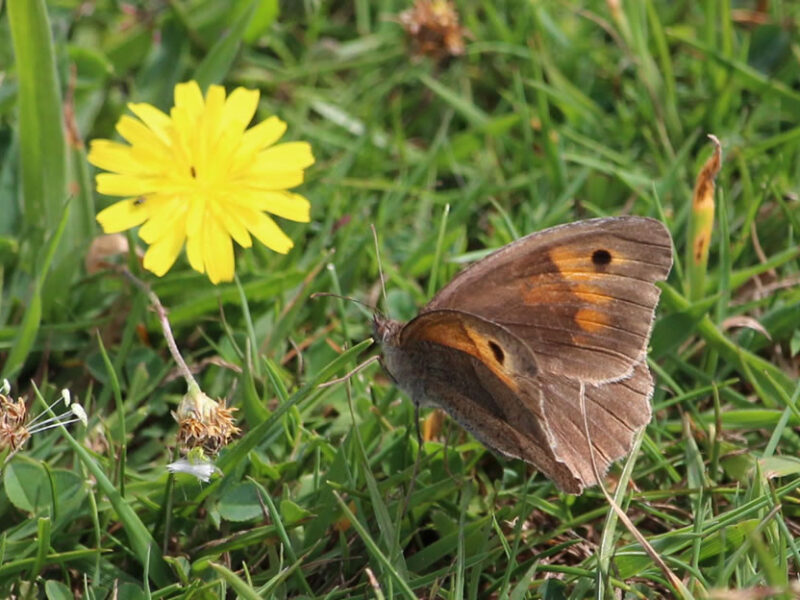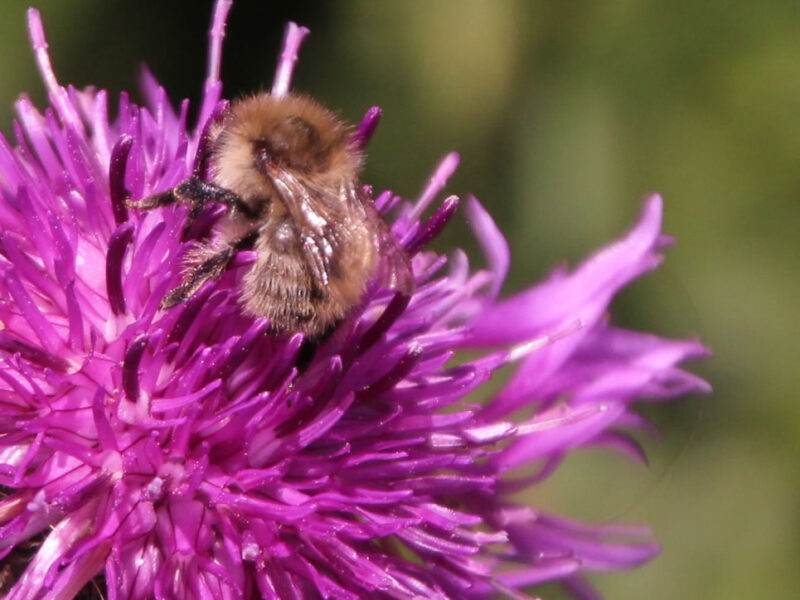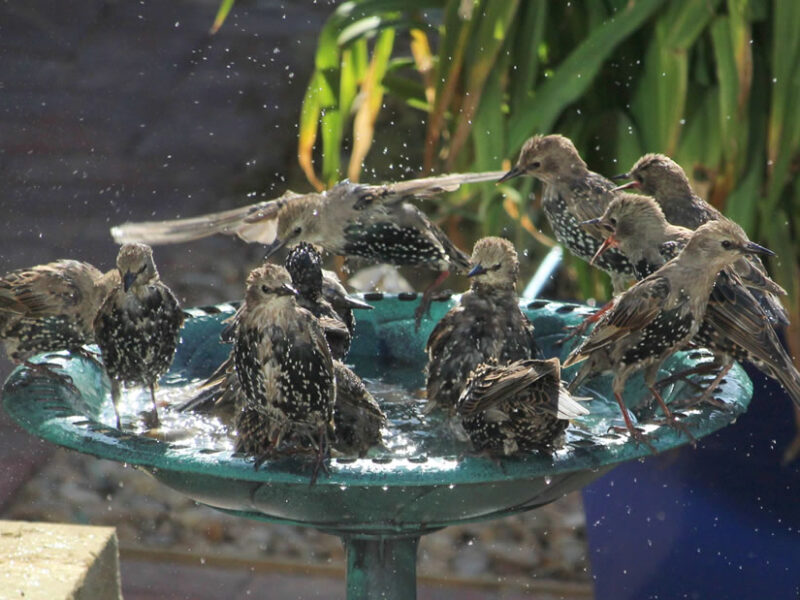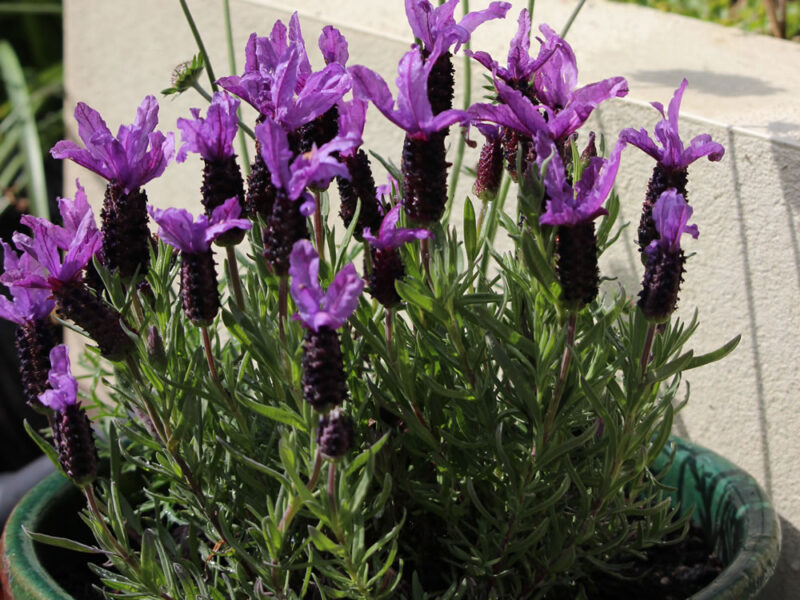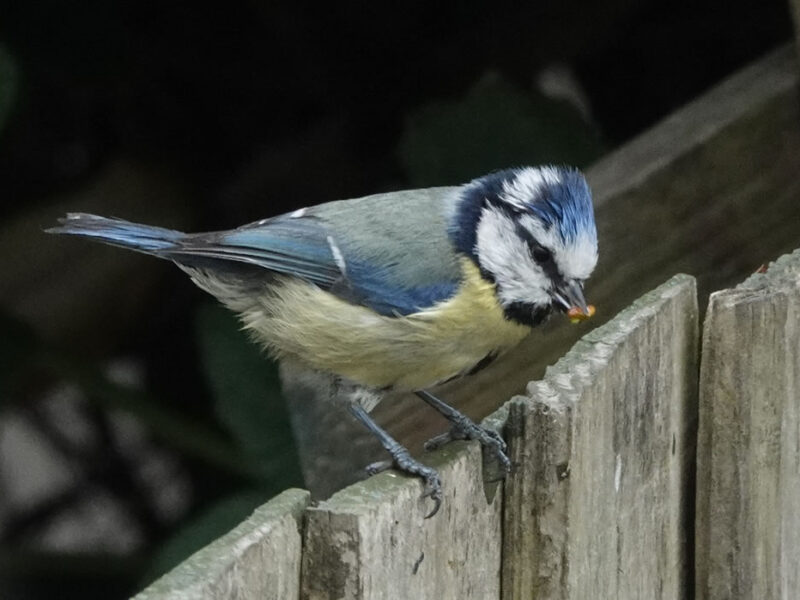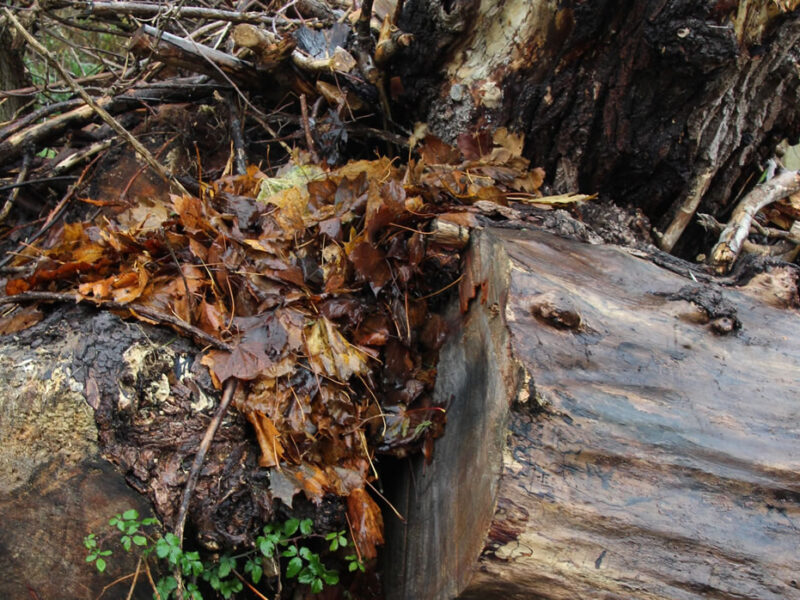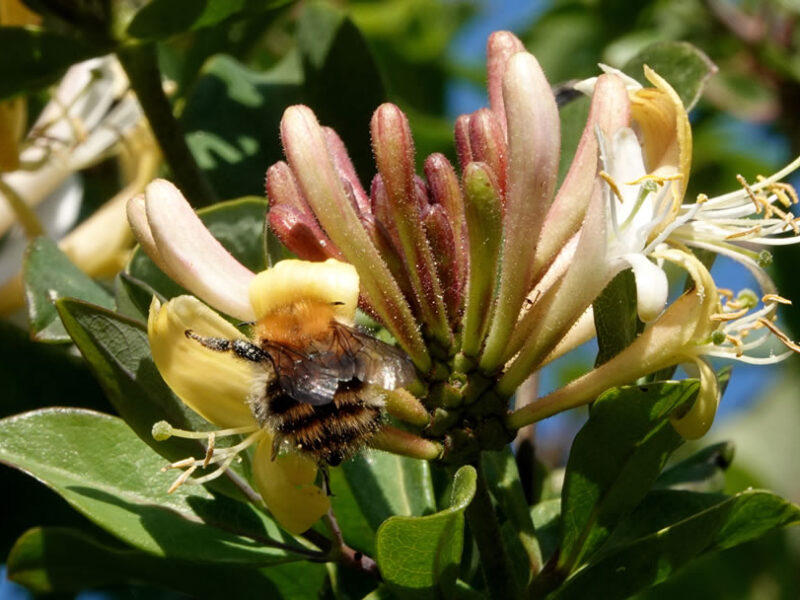ALet the lawn grow
There are likely to be several plants already growing in the grass but they often get cut down before they have a chance to flower. Allowing the grass to grow over the course of the summer and mowing in the autumn after the plants have flowered is one of the easiest ways to attract insects and other animals. You may already have Clover that produces nectar for bees, Yarrow which is beneficial for beetles and lacewing, Knapweed that attracts moths and hoverflies and Ribwort Plantain whose seed heads are good winter food for the birds.
You may want to mow around your long grass area or cut a path through it. This makes it look more intentional and tidier. Try planting spring bulbs in the grass to extend the availability of nectar. You might also like to add some plants that you’ve sown in pots such as Oxeye Daisies and Self Heal. Yellow Rattle is the ideal meadow-maker because it suppresses grass growth and provides space for other plants to flourish.
Finally, many wild flowers grow best on poor soil so it is advisable to rake off the mown grass after a few days. Raking also scratches the surface of the soil allowing further seeds to germinate.
